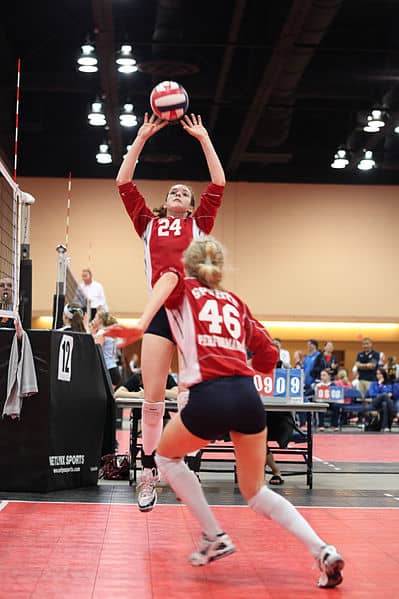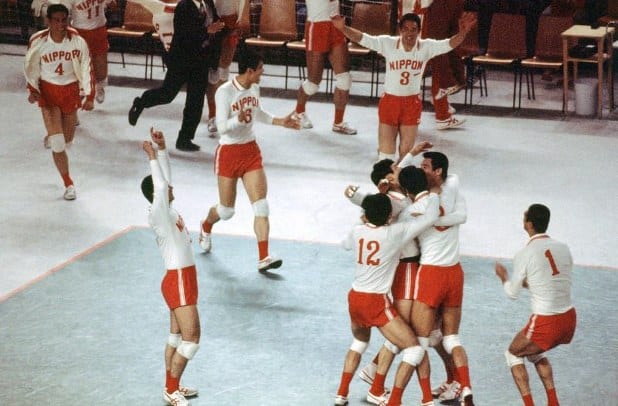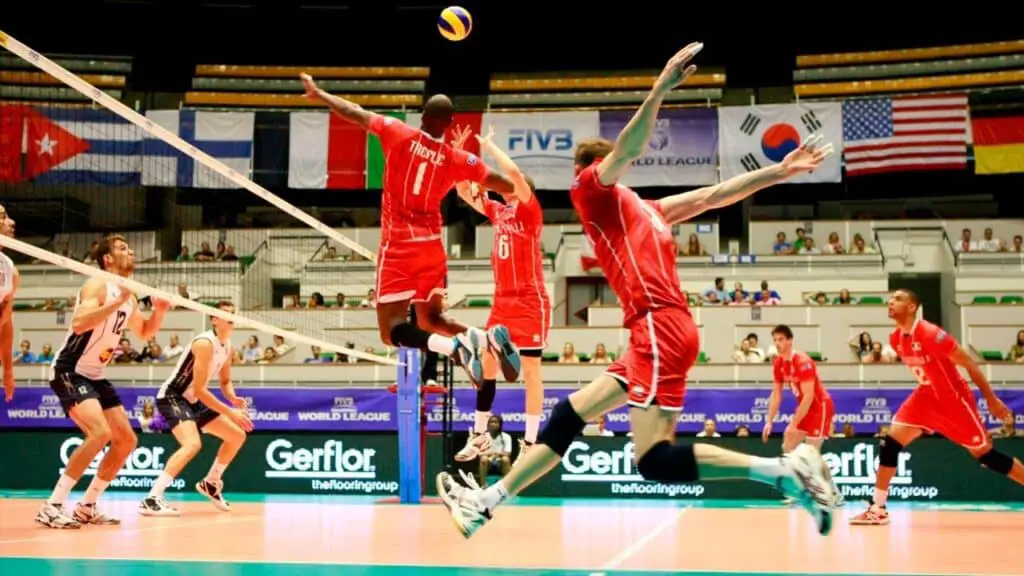Volleyball is a game that to the untrained eye might look like it is about brute force and ignorance, however Volleyball is much like a chess game in which you are trying to out manoeuvre or outsmart your opponent.
There are many ways in which you can outsmart your opponents to gain an advantage and hopefully win the point
These include things such as:
- Disguising the set to make it harder for the opponents to determine which player will spike the ball
- Have the setter dump the ball over the net on the 2nd touch rather than setting.
- Change the tempo of the attack by running a quick attack.
Now you may have seen that last one and be thinking to yourself.
“Change the tempo with a quick attack, what’s that?”
A quick attack in volleyball is where the setter releases the ball quickly and usually with more power so the hitter attacks the ball at a much faster rate, the aim of this attack is to catch the opposition off guard and not allow the blockers enough time to set up an effective block.

There are many different ways to run a quick attack (Sometimes known as a chute set) and used correctly it can be an extremely dangerous weapon to have in your teams arsenal.
With that being said with great reward, comes great risk.
The success of this attack relies a lot with the setter and any small micro adjustments to the set can cause major issues.
Table of Contents
What is a volleyball quick attack
As noted above the quick attack is where the setter distributes the ball with more speed and generally lower (Just above the height of the net) to allow the hitter to attack the ball before the opposition can set up a proper block or get in defensive base positions.
The most common example of a quick attack is a middle blocker who is often in the air ready to hit before the setter has even released the ball, with the middle blocker in the air ready to hit, the setter can simply place the ball in front of the middles path to execute a quick attack and catch the opposition off guard.
The best examples of this would be Lucas and Bruno of Brazil.
Other quick attacks are sometimes referred to as chute sets, this is where the setter distributes the ball fast and just above the height of the net to either wing for the outside hitter or opposite hitter to spike.
This again can be an extremely effective method to offering the wing hitters a 1 vs 1 situation or sometimes even a free net to swing over.
Again I have inserted a video showing some great examples of this in action.
How to execute a volleyball quick attack
As with nearly all motions in volleyball the first step to executing a quick attack is a good ball in from the passing line.
Once the first pass is good we have the option of running a quick attack.
As a middle hitter we nearly always want to run as if we are hitting a quick attack, however, if we are running a quick attack through the wings it is important that both the setter and wing hitters know the play beforehand.
The first step to executing a quick attack is timing.
Timing for a quick attack
As a middle blocker, as a general rule of thumb you should time your jump so that you are in the air already before the setter releases the ball, this allows the setter to place the ball in front of your approach and makes for a much quicker and more efficient attack.
As a wing hitter you need to time your jump slightly after the setter has released the ball otherwise by the time the ball reaches you, you will likely be on the descent phase of your jump.
Getting the timing just right is an artform that requires a lot of practice and a great relationship with the setter.
Knowing how quick and at what height the setter will regularly put the ball will greatly increase your chances of being successful with the quick attack.
Aside from the timing and relationship between the setter the overall hitting approach and spike is the same as traditional hitting.

For more details on this you can read my article on how to spike.
Why A Quick Attack Might Be Useful & How It Was Created?
As already discussed the main advantage of the quick attack is to catch the opposition off guard and attempt to beat the block and the defensive setup.
In fact this was the sole reason it was invented and brought into the game of volleyball.
How the Quick Attack Was Invented
The concept of the quick attack was created by the head coach of the Japanese national team Yasutaka Matsudaira in the mid 1960’s.

Japan is notoriously a smaller nation when it comes to average height, Coach Yasutaka invented the quick attack to beat the much taller teams of the time such as the Soviet Union.
The aim was to beat these lumbering giants with quickness and deception.
The implementation of this tactic was so effective it actually helped Japan with a silver medal in the 1968 Olympic games and then go one further by winning gold at the 1972 Olympic games.

From that point on the quick attack became a staple component of the game and now every volleyball implements this tactic in one form or another.
Aside from the obvious though there are actually some other benefits to using the quick attack, some of which don’t even require the quick attack to be used.
I know that sounds a bit contradictory, however, let me explain.
Deception
Another great advantage to using a quick attack is that if the for example the middle blocker has already run a quick attack many times, the other team is then left with a choice to make, does their middle blocker go up with your middle to block the quick attack or do they stay grounded to help block one of the wings?

In short the quick attack can be a great deceptive tool even if you do not actually end up setting a quick middle.
Offers Prompt To Wing Hitters
One last advantage to the quick attack is the prompt that it gives the outside and opposite hitter, if the wing hitters see the middle running a quick attack they know that if they start their approach just after the middle they should be right on time to spike the ball should the setter opt to not set the middle.
Alternatively if the wing hitter has asked for a chute set the middle and opposite will have to run at similar timings to ensure if they are suddenly set they are on time for the spike.
By all running at the same time this makes it increasingly difficult for the opposition to decipher who is about to spike the ball.
Drawbacks to the Volleyball Quick Attack
As I touched on above the success of this type of attack rests a lot with the setter as if they release the ball too late the player may already be on the way down from the jump, too soon as the hitter may not get there in time and too high the attacker may miss the ball completely.
The success rate of a quick attack often comes from lots of practice and a fantastic relationship between the setter and attackers.
It is, however, unfair to pin all the blame on the setters, as we all know nothing in volleyball is possible without the first pass being accurate.
The more accurate the first pass, the easier it makes the setters job distributing the ball.
How to know when to use a quick attack
Knowing exactly when and when not to use a quick attack may seem like a tricky task to be honest it’s actually very simple.
The reason it’s simple is because there really isn’t a wrong time to use the quick attack.
As long as the attackers know you that the setter is running quick attacks this play can be used.
It is, however, worth noting that a quick attack can be particularly difficult to run when the pass isn’t very good.
One of the main things that needs to be in place for a quick attack to be effective is a good reliable set.
The second the pass is off this puts the setter out of system which can make it difficult to get the set in the ideal location for the attacker.
With this in mind if you see the pass isn’t good it may be worth calling an audible and changing the play to ensure the setter and attackers have the best chance of converting the point of keeping the rally alive.
